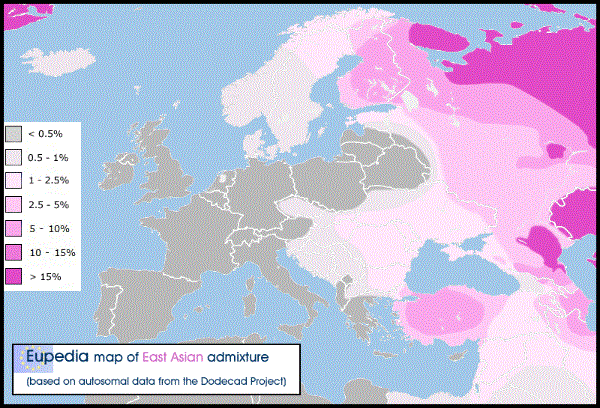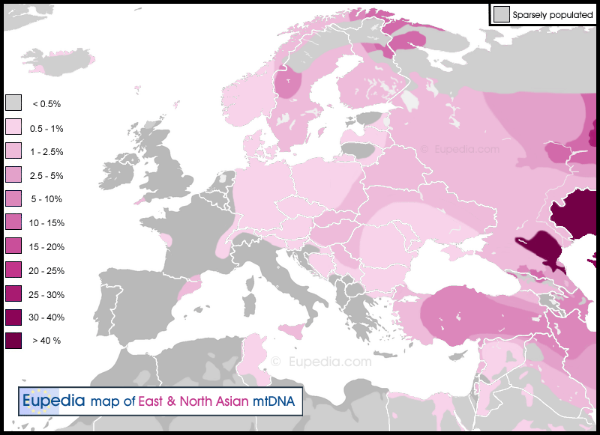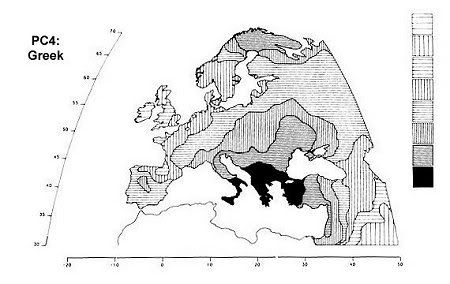Post by Admin on Nov 3, 2022 16:29:37 GMT
Souvlaki (Greek: σουβλάκι, souvláki, [suˈvlaci]; plural: σουβλάκια, souvlákia), is a popular Greek fast food consisting of small pieces of meat and sometimes vegetables grilled on a skewer. It is usually eaten straight off the skewer while still hot. It can be served with or inside of a rolled pita, typically with lemon, sauces, vegetables such as sliced tomato and onion, and fried potatoes as a side. The meat usually used in Greece and Cyprus is pork, although chicken, beef, and lamb may also be used there and elsewhere.


Pair of firedogs with slots for holding skewers, 17th century BC, Akrotiri.
History
In Greek culture, the practice of cooking food on spits or skewers historically dates back to the Bronze Age.[3] Excavations in Santorini, Greece, unearthed sets of stone cooking supports used by the natives of the island before the Thera eruption of the 17th century BC; souvlaki was "a popular delicacy in Santorini back in 2000 BC."[4] In the stone cooking supports, there are pairs of indentations that were likely used for holding skewers and the line of holes in the base allowed the coals to be supplied with air.[5]
In Mycenaean Greece, "souvlaki trays" were discovered in Gla, Mycenae, and Pylos.[3] The "souvlaki trays" (or portable grills) used by the Mycenaean Greeks were rectangular ceramic pans that sat underneath skewers of meat.[3] It is not clear whether these trays would have been placed directly over a fire or if the pans would have held hot coals like a portable barbecue pit.[3][6] Spit supports appear to "continue in use into the Early Iron Age at Nichoria."[3] In Greek literature, Homer in the Iliad (1.465) mentions pieces of meat roasted on spits (ὀβελός); this is also mentioned in the works of Aristophanes,[7] Xenophon,[8] Aristotle,[9] and others.[10][11] In Classical Greece, a small spit or skewer was known as ὀβελίσκος (obeliskos),[12] and Aristophanes mentions such skewers being used to roast thrushes.[13]
In the Byzantine Empire, the Greek author of the Prodromic Poems (4.231) mentions "the hot meat shops" of Constantinople providing clients with spit-roasting meat slices similar to souvlaki known as psenasis souglitarea.[14]
Modern-day souvlaki was described by Gustave Flaubert, a French traveler, who observed Greeks "grilling pieces of meat on a bamboo stick" during his visit to the Boeotian countryside of southern Central Greece in 1850.[15] However, modern-day souvlaki was not widely distributed in Greece until after World War II.[15] Souvlaki skewers served as fast food started to be sold widely in the 1960s, after being introduced by vendors from Boeotia.[15] The first known use of the word souvlaki in English was in 1942.[16]
en.wikipedia.org/wiki/Souvlaki
History of beer
Beer is one of the world's oldest prepared alcoholic drinks. The earliest archaeological evidence of fermentation consists of 13,000-year-old residues of a beer with the consistency of gruel, used by the semi-nomadic Natufians for ritual feasting, at the Raqefet Cave in the Carmel Mountains near Haifa in Israel.[16][17] There is evidence that beer was produced at Göbekli Tepe during the Pre-Pottery Neolithic (around 8500 BC to 5500 BC).[18] The earliest clear chemical evidence of beer produced from barley dates to about 3500–3100 BC, from the site of Godin Tepe in the Zagros Mountains of western Iran.[19][20] It is possible, but not proven, that it dates back even further—to about 10,000 BC, when cereal was first farmed.[21] Beer is recorded in the written history of ancient Egypt,[22][23] and archaeologists speculate that beer was instrumental in the formation of civilizations.[24] Approximately 5000 years ago, workers in the city of Uruk (modern day Iraq) were paid by their employers with volumes of beer.[25] During the building of the Great Pyramids in Giza, Egypt, each worker got a daily ration of four to five litres of beer, which served as both nutrition and refreshment that was crucial to the pyramids' construction.[26]
en.wikipedia.org/wiki/Beer#History
Beer is one of the oldest drinks humans have produced. The first chemically confirmed barley beer dates back to the 5th millennium BC in modern-day Iran, and was recorded in the written history of ancient Egypt and Mesopotamia and spread throughout the world.
en.wikipedia.org/wiki/History_of_beer
Beer is MENA!!!
Enjoy your MENA beer!
Kebap
The word souvlaki is a diminutive of the Greek souvla (spit), itself borrowed from the Latin word subula. But the origins of souvlaki date back to ancient Greece. It was known with the name obeliskos (dim. of obelos –spit), mentioned by among others in the works of Aristophanes, Xenophon, Aristotle etc. A meat and bread recipe which resembles the way pita souvlaki is served today with pita bread was also attested by Athenaeus in his “Deipnosophistae” and called the plate kandaulos. The skewered kebab-like recipe existed as a favourite in ancient Greece during Archaic times, as the earliest references are attested in Homer.
greekreporter.com/2012/07/31/souvlaki-the-origins-of-greek-fast-food/
Grigson, Jane (1983-01-01). Jane Grigson's book of European cookery. Atheneum. ISBN 9780689113987. "Kebabs were as popular among the ancient Greeks as they are today. Homer tells us how Achilles organised a barbecue when he had envoys from Troy to dinner."
Jack, Albert (2010-09-02). What Caesar Did For My Salad: The Secret Meanings of our Favourite Dishes. Penguin Books Limited. ISBN 9780141929927. "ancient Greeks from Homer to Aristophanes wrote about an earlier variant of the kebab, the obeliskos (meaning 'little spit' [...]"
ipfs.io/ipfs/QmXoypizjW3WknFiJnKLwHCnL72vedxjQkDDP1mXWo6uco/wiki/Kebab.html
Turkish cuisine (Turkish: Türk mutfağı) is largely the heritage of Ottoman cuisine, which can be described as a fusion and refinement of Central Asian, Middle Eastern, Eastern European and Balkan cuisines.[1][2][3]
en.wikipedia.org/wiki/Turkish_cuisine


Pair of firedogs with slots for holding skewers, 17th century BC, Akrotiri.
History
In Greek culture, the practice of cooking food on spits or skewers historically dates back to the Bronze Age.[3] Excavations in Santorini, Greece, unearthed sets of stone cooking supports used by the natives of the island before the Thera eruption of the 17th century BC; souvlaki was "a popular delicacy in Santorini back in 2000 BC."[4] In the stone cooking supports, there are pairs of indentations that were likely used for holding skewers and the line of holes in the base allowed the coals to be supplied with air.[5]
In Mycenaean Greece, "souvlaki trays" were discovered in Gla, Mycenae, and Pylos.[3] The "souvlaki trays" (or portable grills) used by the Mycenaean Greeks were rectangular ceramic pans that sat underneath skewers of meat.[3] It is not clear whether these trays would have been placed directly over a fire or if the pans would have held hot coals like a portable barbecue pit.[3][6] Spit supports appear to "continue in use into the Early Iron Age at Nichoria."[3] In Greek literature, Homer in the Iliad (1.465) mentions pieces of meat roasted on spits (ὀβελός); this is also mentioned in the works of Aristophanes,[7] Xenophon,[8] Aristotle,[9] and others.[10][11] In Classical Greece, a small spit or skewer was known as ὀβελίσκος (obeliskos),[12] and Aristophanes mentions such skewers being used to roast thrushes.[13]
In the Byzantine Empire, the Greek author of the Prodromic Poems (4.231) mentions "the hot meat shops" of Constantinople providing clients with spit-roasting meat slices similar to souvlaki known as psenasis souglitarea.[14]
Modern-day souvlaki was described by Gustave Flaubert, a French traveler, who observed Greeks "grilling pieces of meat on a bamboo stick" during his visit to the Boeotian countryside of southern Central Greece in 1850.[15] However, modern-day souvlaki was not widely distributed in Greece until after World War II.[15] Souvlaki skewers served as fast food started to be sold widely in the 1960s, after being introduced by vendors from Boeotia.[15] The first known use of the word souvlaki in English was in 1942.[16]
en.wikipedia.org/wiki/Souvlaki
History of beer
Beer is one of the world's oldest prepared alcoholic drinks. The earliest archaeological evidence of fermentation consists of 13,000-year-old residues of a beer with the consistency of gruel, used by the semi-nomadic Natufians for ritual feasting, at the Raqefet Cave in the Carmel Mountains near Haifa in Israel.[16][17] There is evidence that beer was produced at Göbekli Tepe during the Pre-Pottery Neolithic (around 8500 BC to 5500 BC).[18] The earliest clear chemical evidence of beer produced from barley dates to about 3500–3100 BC, from the site of Godin Tepe in the Zagros Mountains of western Iran.[19][20] It is possible, but not proven, that it dates back even further—to about 10,000 BC, when cereal was first farmed.[21] Beer is recorded in the written history of ancient Egypt,[22][23] and archaeologists speculate that beer was instrumental in the formation of civilizations.[24] Approximately 5000 years ago, workers in the city of Uruk (modern day Iraq) were paid by their employers with volumes of beer.[25] During the building of the Great Pyramids in Giza, Egypt, each worker got a daily ration of four to five litres of beer, which served as both nutrition and refreshment that was crucial to the pyramids' construction.[26]
en.wikipedia.org/wiki/Beer#History
Beer is one of the oldest drinks humans have produced. The first chemically confirmed barley beer dates back to the 5th millennium BC in modern-day Iran, and was recorded in the written history of ancient Egypt and Mesopotamia and spread throughout the world.
en.wikipedia.org/wiki/History_of_beer
Beer is MENA!!!
Enjoy your MENA beer!
Kebap
The word souvlaki is a diminutive of the Greek souvla (spit), itself borrowed from the Latin word subula. But the origins of souvlaki date back to ancient Greece. It was known with the name obeliskos (dim. of obelos –spit), mentioned by among others in the works of Aristophanes, Xenophon, Aristotle etc. A meat and bread recipe which resembles the way pita souvlaki is served today with pita bread was also attested by Athenaeus in his “Deipnosophistae” and called the plate kandaulos. The skewered kebab-like recipe existed as a favourite in ancient Greece during Archaic times, as the earliest references are attested in Homer.
greekreporter.com/2012/07/31/souvlaki-the-origins-of-greek-fast-food/
Grigson, Jane (1983-01-01). Jane Grigson's book of European cookery. Atheneum. ISBN 9780689113987. "Kebabs were as popular among the ancient Greeks as they are today. Homer tells us how Achilles organised a barbecue when he had envoys from Troy to dinner."
Jack, Albert (2010-09-02). What Caesar Did For My Salad: The Secret Meanings of our Favourite Dishes. Penguin Books Limited. ISBN 9780141929927. "ancient Greeks from Homer to Aristophanes wrote about an earlier variant of the kebab, the obeliskos (meaning 'little spit' [...]"
ipfs.io/ipfs/QmXoypizjW3WknFiJnKLwHCnL72vedxjQkDDP1mXWo6uco/wiki/Kebab.html
Turkish cuisine (Turkish: Türk mutfağı) is largely the heritage of Ottoman cuisine, which can be described as a fusion and refinement of Central Asian, Middle Eastern, Eastern European and Balkan cuisines.[1][2][3]
en.wikipedia.org/wiki/Turkish_cuisine





























































